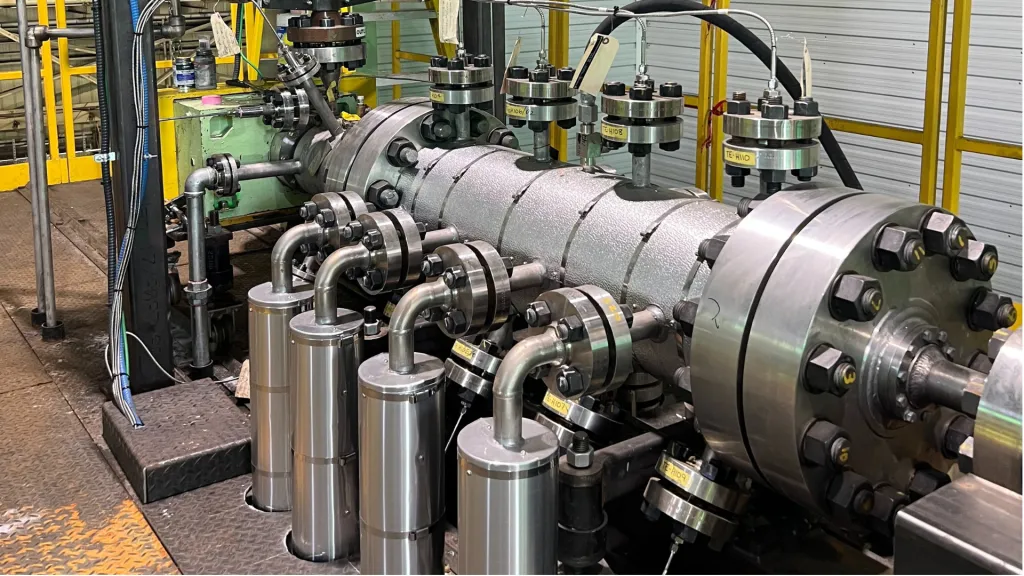In a groundbreaking development poised to reshape the hydrogen energy landscape, researchers have made significant strides in high-pressure hydrogen production via water electrolysis. This innovative approach, detailed in a recent study led by Jiazhe Wu from the International Research Center for Renewable Energy at Xi’an Jiaotong University, promises to streamline hydrogen production and storage, potentially revolutionizing the energy sector.
Traditional methods of hydrogen production involve generating hydrogen at ambient pressure and then using mechanical compressors to achieve the desired pressure for storage and transportation. This process is not only energy-intensive but also adds to the overall cost. In contrast, high-pressure hydrogen production via water electrolysis, particularly using Proton Exchange Membrane (PEM) technology, integrates hydrogen production with storage and transportation, eliminating the need for additional compression steps.
“PEM water electrolysis systems demonstrate higher integration and superior energy efficiency within specific pressure ranges,” explains Wu. This efficiency is a game-changer for the energy sector, where reducing costs and improving energy efficiency are paramount.
One of the critical challenges in high-pressure PEM water electrolysis is hydrogen crossover, which reduces hydrogen production efficiency and increases the hydrogen content in oxygen. Wu and his team have delved deep into the mechanisms of hydrogen crossover, identifying strategies to mitigate this issue. They found that the hydrogen crossover rate increases linearly with the water electrolysis current density, leading to the development of two primary models: the pressure-enhancement model and the supersaturation model.
To address hydrogen crossover, researchers have explored various strategies, including using thicker proton exchange membranes, modifying the backbone and functional groups of these membranes, and loading hydrogen oxidation catalysts on the anode side of the membrane electrode assembly. While these methods have shown promise in laboratory settings, challenges such as high costs and technical immaturity remain hurdles to large-scale deployment.
One of the most exciting advancements in this field is the development of decoupled water electrolysis (DWE) technology. DWE uses redox mediators to separate hydrogen and oxygen evolution reactions temporally or spatially, offering a potential solution to hydrogen crossover. Wu’s team has reviewed the principles and technical characteristics of various DWE systems, classifying them into solid-phase and liquid-phase mediator systems.
“DWE systems offer notable flexibility and safety, but there is considerable space for improvement before these systems can be scaled up for widespread application,” notes Wu. For instance, DWE systems based on solid-state mediators need to focus on improving the utilization efficiency of the mediator capacity, while systems based on liquid mediators require enhancements in current density and reductions in operating voltage.
Published in the Journal of Engineering Science (工程科学学报), this research provides valuable insights into the fundamental mechanisms, research progress, and optimization strategies of high-pressure hydrogen production via water electrolysis. As the world increasingly turns to hydrogen as a clean energy source, these advancements could play a pivotal role in shaping the future of the energy sector.
The implications of this research are far-reaching. By improving the efficiency and reducing the costs associated with hydrogen production, these technologies could accelerate the adoption of hydrogen as a viable energy source. This, in turn, could have a profound impact on reducing carbon emissions and mitigating climate change.
As Wu and his team continue to push the boundaries of what is possible in hydrogen production, the energy sector watches with bated breath. The future of hydrogen energy is bright, and these advancements bring us one step closer to a sustainable and clean energy future.

